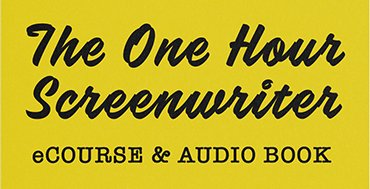Triage – Day Thirty Seven – #40movies40days


I read the book several years ago– a random pick at a library sale. I loved it and thought it would make a great movie. The film adaptation came and went without even registering with me. The adaptation is reasonably well done but can’t compare to the book. I highly recommend the book and recommend the film (if a bit less heartily).
In the story, injured and traumatized (“I’m fine”) war photographer, Mark (Colin Farrell), returns home from a photo assignment in Kurdistan. His lover Elena Morales (Paz Vega) waits for him but is surprised by his return. Mark never called to say he was arriving home and he returns alone. He professes to have been separated from his best friend Colin. He suggests that Colin must have been delayed somehow.
Although Mark’s injuries appear to be healing nicely, his condition only worsens. Finally, he is confined to a wheelchair.
Elena, his girlfriend, is estranged from her grandfather, Joaquin Morales (Christopher Lee) because of his past “Fascist” associations. Her grandfather ran a psychological “purification” clinic for war criminals at the end of the Spanish Civil War. She asks him to come because she is desperate and has no other idea how to help Mark recover. His “therapy” forces Mark to confront his own complicity in the events that haunt him. Below is one of his sessions with Mark:
Joaquín Morales: (Mark has just talked of an early experience as a war photographer involving a young boy’s murder by soldiers) Why do you think this incident affected you?
Mark Walsh: I dunno. Maybe I felt responsible.
Joaquín Morales: Well, perhaps if you hadn’t been there, he wouldn’t have run. The soldiers would not have fired, hmm?
Mark Walsh: (after a pause) I suppose so…
Joaquín Morales: Well that makes perfect sense. You feel that you’re responsible because to a great degree, you are. You think I’m too harsh? How many people have you told this story to, Mark? Four? Three? Two? Twenty? And what do they say? “Oh you mustn’t blame yourself.” “Oh no, it was not your fault.” “Oh no, there was nothing you could do.” Am I correct? You have looked to others for forgiveness but, as you have discovered, this is something they cannot give you. We cannot let go of the pain, we have to carry it with us forever. That is what it means to live. Now, I can help you to live with this pain. Look at me!
(Mark, who has been avoiding the older man’s eyes, turns to look at him)
Joaquín Morales: I am eighty-six years old. I lost my entire family, I lost my parents, I lost my brothers and sisters and I lost my wife. And yet, I am still here, I can still smile, and the world is still, a wonderful place.
Again, the difference between happiness and joy surfaces in a film. Acceptance, responsibility, gratitude and (finally) joy. The hardest person to forgive is yourself. Forgiving yourself requires facing the hard truth about yourself and making what amends you can. That’s the basis of every twelve-step program on the planet. Mark is an adrenaline junkie passionate about his work– “Just one more day. Just one more shot. Just one more chance at greatness, fame and fortune.” Like the young actor in the Sophia Coppola’s film, Somewhere, his “real life” is just the boring routine bits in between creative assignments. I share those thoughts and feelings too often. I’m less and less convinced that is a good way to live.
In the film, Joaquin Morales helps Mark go through the necessary step for forgiveness.
1. See the situation as a whole (War is chaotic and random. There is little sense to who lives or who dies.)
2. See your relative place in the situation (You are culpable because you are there, recording (and profiting) on what suffering you see.)
3. Speak the unspoken emotional communication (I’m sorry. I goaded him into staying longer than he wanted to and he died because of that.)
4. Cherish the positive (Life is good. The living must take responsibility and come back to their families.)
5. Let go of the rest
This basic process is key to resolving any loss and is outlined in great detail in The Grief Recovery Handbook by John W. James and Russell Friedman. It is an approach that is vital to any story about finding the courage to forgive. A much longer analysis of how this works in the films Casablanca and Volver is HERE http://etbscreenwriting.com//forgiveness-in-volver-and-casablanca/



Create a visual map for a character’s emotional journey. Pull stories from character rather from rote story structure beats. Some of the largest international media companies, use this in story and character development.


A clear concise guide for writers and producers to have by their side as they embark on a project. It gives a really vital reminder of what is key for story success.

No comment yet, add your voice below!